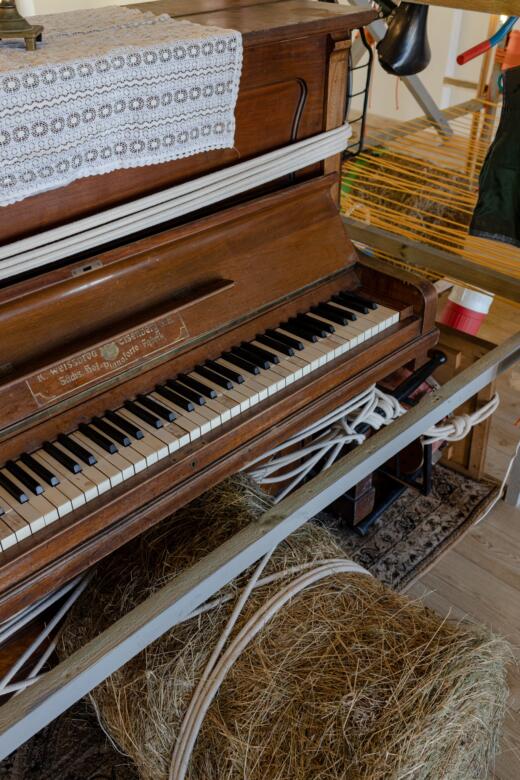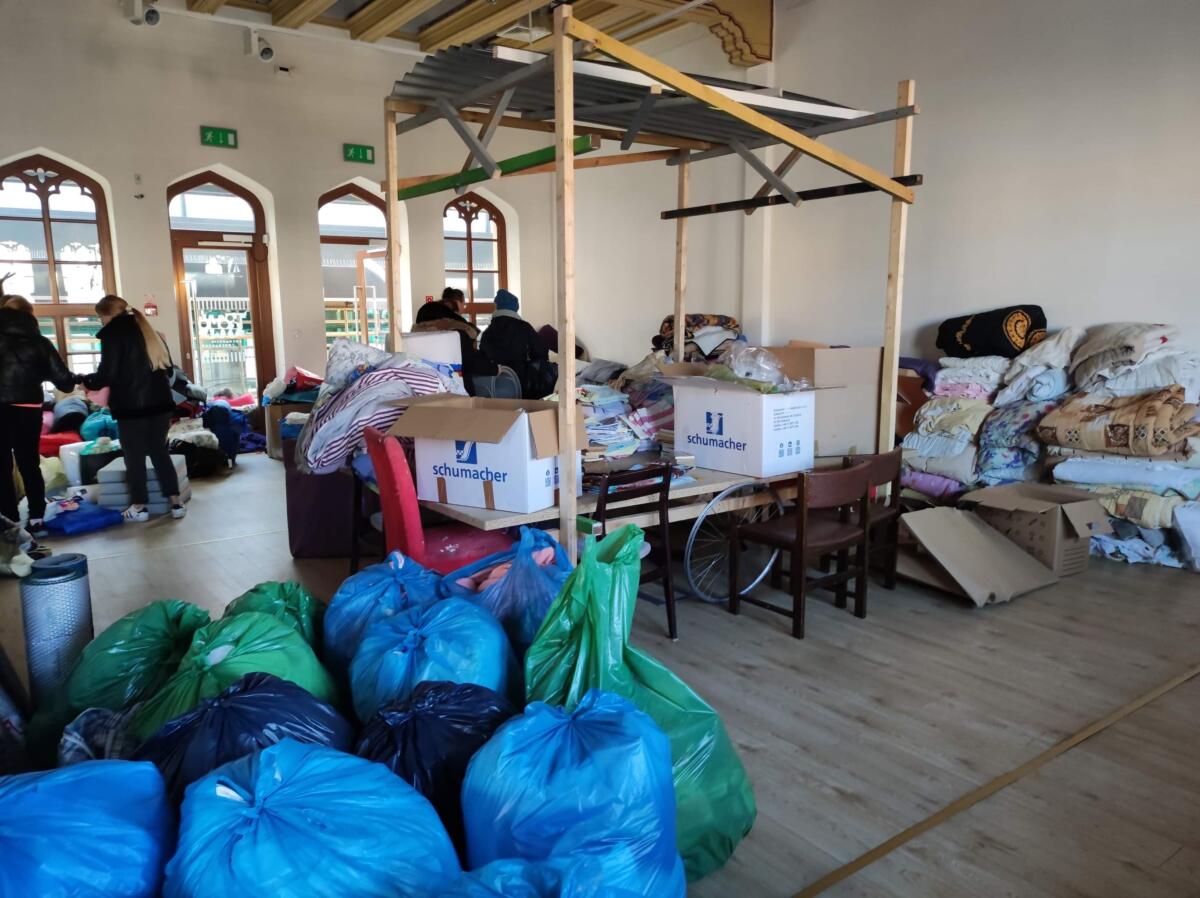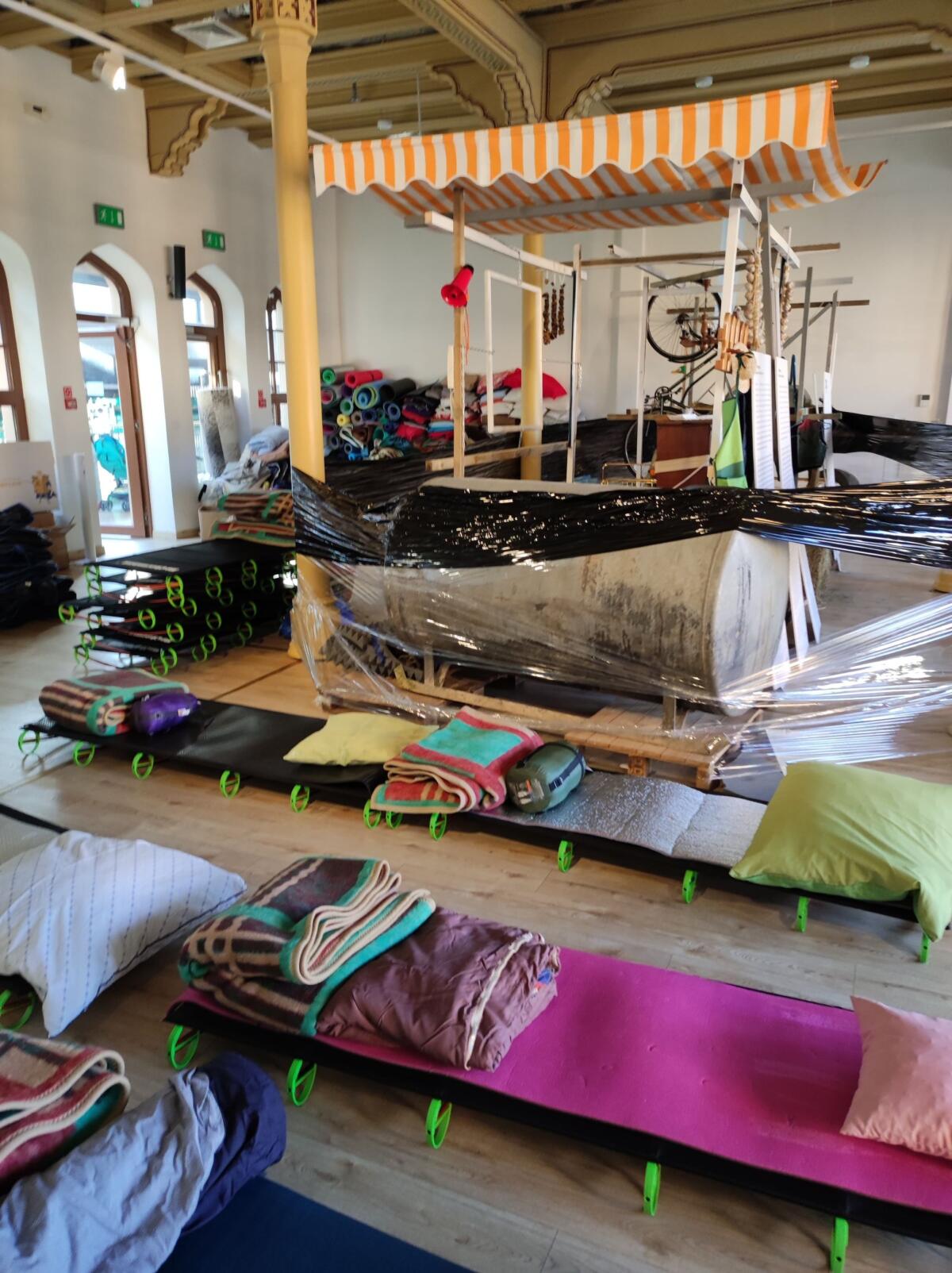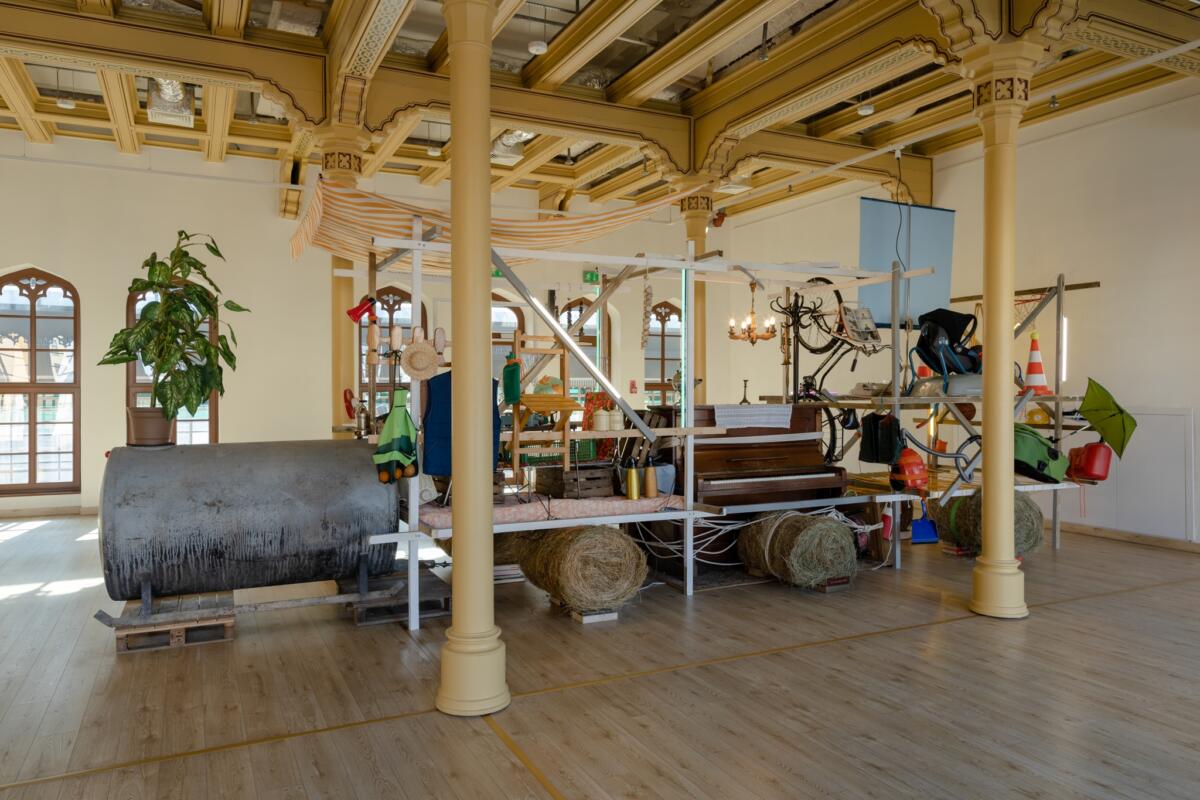
Vera Zalutskaya: Your recent project Lokomotywa (Locomotive) is full of meanings connected to Polish history, including 20th century migrations and the current local situation with refugees. What were the origins of your idea?
Yael Vishnizki-Levi: It was inspired by the poem “Lokomotywa” by Julian Tuwim, which I first heard during one of my Polish classes. I remember that my teacher didn’t even need to read it because most of the people that grew up in Poland remember at least half of it by heart. It’s an onomatopoeic poem with counting elements. It describes the engine and each wagon, and the journey itself in a really communicative way. So it has these movements within the lyrics, but it is also a bit absurd, a bit Dadaistic. It aims to transmit the technological changes to children, to teach them. This element was really symbolic for me, constant movement from place to place is part of my life as well as my practice because of the fact that I moved to Poland from Tel Aviv and before that I was moving between Tel Aviv and New York, where I was born. My grandfather was a Polish Jew, my mother was born in Lviv in Ukraine but she emigrated as a baby to Israel. It correlates somehow with Julian Tuwim’s story, who was a Polish Jewish poet, writing mostly in Polish, and really active and famous before the Second World War. “Lokomotywa” was published in 1938 and it was just two years, or even one year, before Julian Tuwim himself needed to leave Poland. He probably did this by train, at least the beginning of his journey, which took him through Portugal and France, and then later to Brazil, and then finally to the US.
V: As an immigrant from Belarus in Poland, I can relate to your feeling of constantly missing something that is meant to be known by everybody. I read this poem by Tuwim for the first time just in preparation for this interview. My first thought was that the poem describes an elegant locomotive, taking some rich people somewhere. My own experience of migration was totally opposite: going with just one small suitcase and that’s it. Did you notice such contradictions between the historical and contemporary meanings of migration?
Y: Yeah, absolutely. Tuwim’s poem is written from a very bourgeois, Europe-centric perspective. While preparing the project I had a funny story with a grand piano. One line in the poem says that the fifth wagon has a cargo of six grand pianos. It was very important for me to include a piano in my sculpture. I told Patrycja, the producer, that we have to find a piano, that it’s the most important element. She found the piano eventually and she said: “Yeah, but you know, I found a regular piano. There is no grand piano. We cannot put a grand piano inside the gallery”. And I didn’t even think about the difference. I am not a musician, but I also come from a very different cultural background. In a way I attempt to oppose this kind of pan-Europeanism, to give contrast to it. It could be manifested in simple things like not differentiating between a piano and a grand piano, but it has other manifestations too in academic curriculums for example. I am very happy that I could be a part of a strong current wave of artists and scholars who attempt to challenge the very western position that there is superior knowledge and “classic” cultural references that are known to all. I relate to it both as an Eastern European Jew and as an Anti Zionist who was brought up in the Middle East. These two Easts are where both my torn-identity and art practice connects.
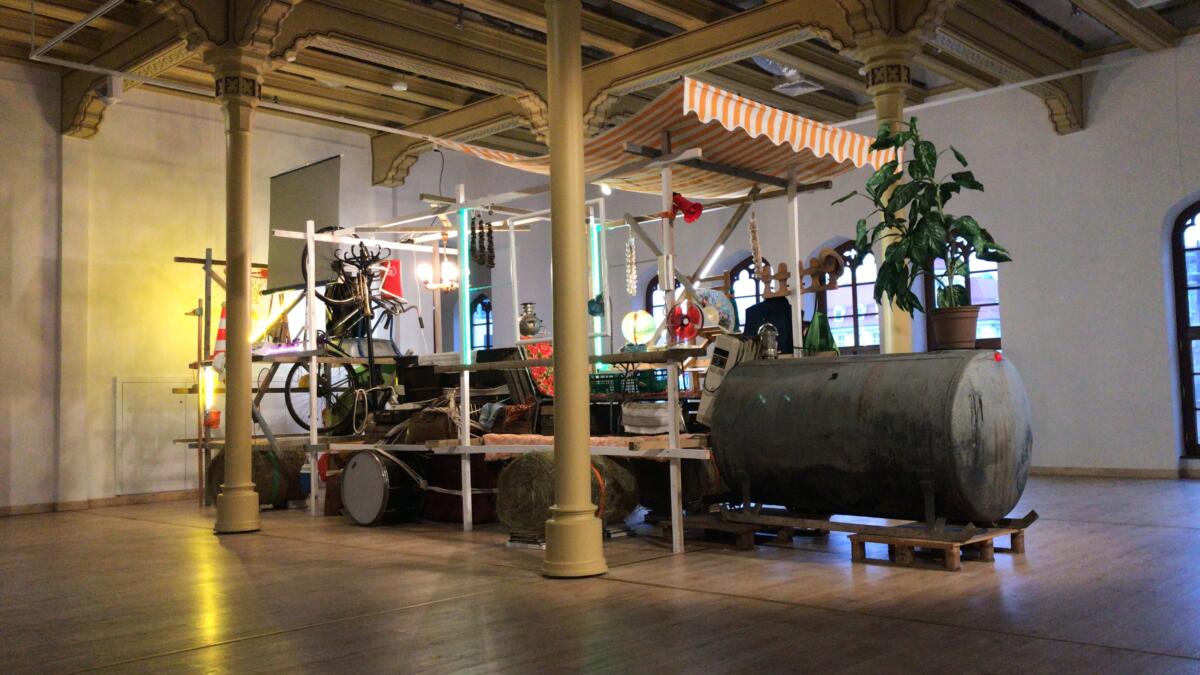
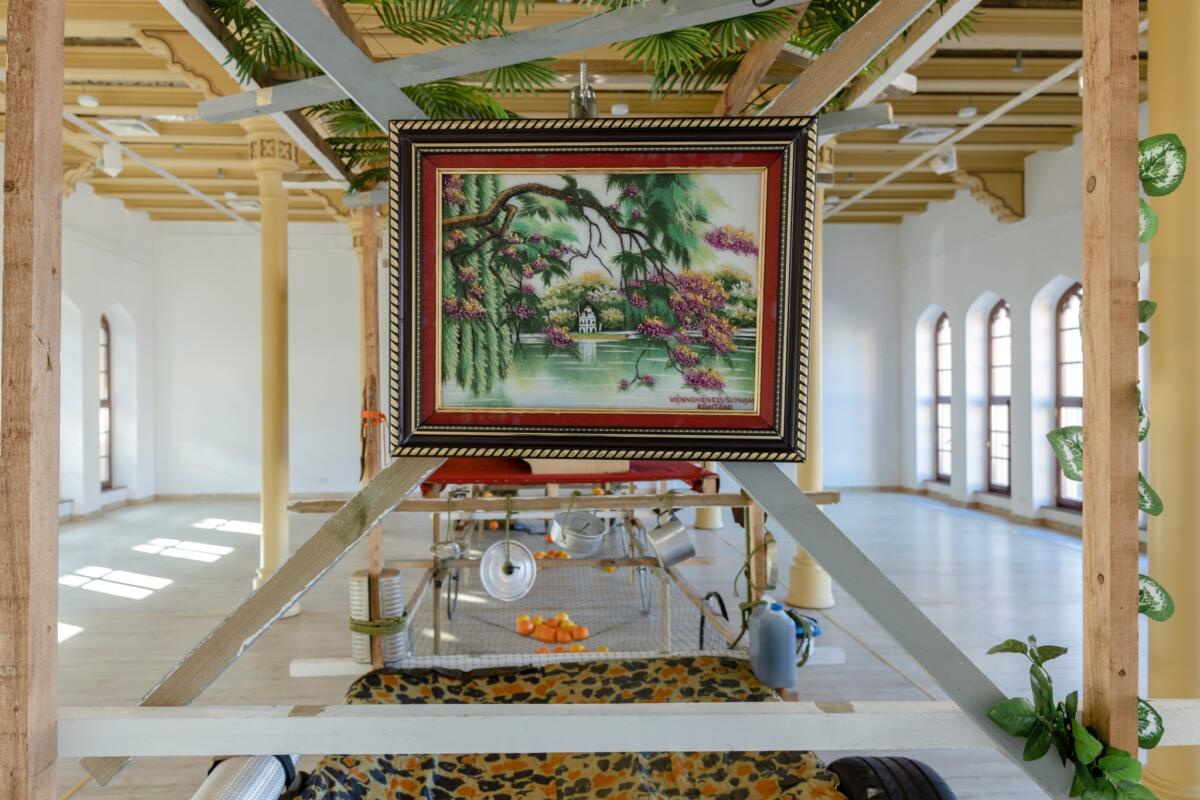
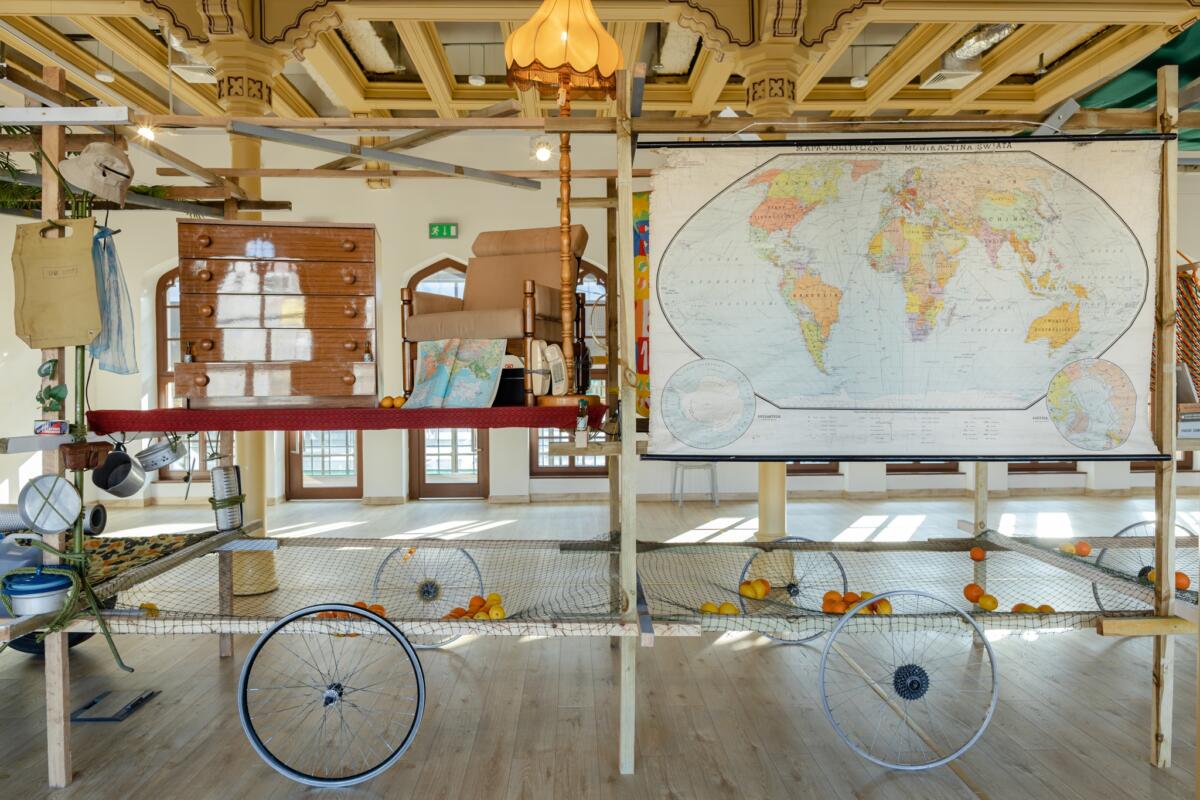
Returning to the locomotive, I know many stories of people that managed to travel with big furniture that they wanted to keep, as part of their personal heritage. I don’t have this perspective either; each time I move to a different apartment I need to furnish it myself or enter a furnished apartment already. But this is a privileged perspective as well, contemporary bourgeoisie in a way, which does not necessarily come with money but still belongs to the “free occupations” that can choose to travel. It is very different from the experience of those who are forced to escape or flee, for example immigrants from Afghanistan or Syria, who leave with just a backpack. I’m aware that I can only partly relate to it, but I cannot feel it in my own body.
V: How did you manage to reconcile all these contradictions in your project?
Y: The current historical moment did it for me. I admit that it is very strange to think about the poem in the context of the time when it was written. I mean, the train during World War II was sending people to die. And it’s a really intense element to be playful about with children. I know that in almost every language there is a song about a train, some kind of a game song for children. But also from the post-Holocaust narrative that I grew up with, I felt that it is an element that carries with a burden.
Last summer, when I started to work on the project at BWA Wrocław Główny, which is located at the train station, reality brought new additional meaning to the piece. It was the moment when the refugee crisis at the Polish-Belarussian border started. I remember it felt so eerie, so uncanny because of the fact that people are coming from the Middle East, where I grew up, from this very troubled and sad region, and they are being thrown into the forest where some of them have died, and this is all happening because of a mad plan of the Belarusian dictator, Lukashenko. It is really a huge tragedy for me and I tried to highlight it in my Lokomotywa project as well.
V: You literally built the locomotive at the gallery space, what was your idea about how to do it? And what was the participatory moment?
Y: My aim was to create a kind of 3D archive of migration in the shape of a European locomotive from the 1920s. I looked at different models of early locomotives that were working in this part of Europe and tried to combine them together into a more generic version. Almost like the emoji of the locomotive, something quite childish. A really important aspect of this project was sustainability. I didn’t want to buy anything new, I have a lot of criticism towards the art world for its creation of so much waste. So I started looking in different places for free things, like in the śmieciarka both in Warsaw and in Wrocław, and I began collecting a lot of objects. I went to different flea markets and found things on the streets. And eventually there was this monumental kind of zbiór, or collection, that I created. Then I started to work with the architect Bartosz Kowal from Prolog. We spoke about the poem and about my visions. Bartek was very attentive to my concept and together we constructed the shape of the locomotive and an additional wagon. We used material from the gallery storage to construct a big, wooden shape that resembled a locomotive enough that could be versatile, so we could adjust different objects to it and create levels. There were a few levels to the sculpture that I could play with. We found a huge metal container that is usually used on farms to collect rainwater. It really looked like the front of a locomotive. This illustrative aspect was very important for me because I wanted to represent the poem in this way that children play, when they decide, for instance, that the tablecloth is a window for their home and the table is the structure. And they sit under it and they say that this is their home. So in a way, I wanted to appropriate the object that collects water, which is something extremely important for everybody, but to say: “Now it’s not the water container. It can have water inside, but now we will look at it like this is the front of a locomotive”.
And immediately the participatory element grew around the project. We made an open call for people to donate objects. The first aspect was to collect objects that were really necessary for people at the center for refugees. The plan was that after the exhibition, all of these objects would be given away. The second aspect of this invitation was for immigrants living in the region of Dolny Śląsk, to bring objects connected with their own migration. They could decide if they wanted to donate it or if they only wanted to lend it to the exhibition.
V: Can you tell us what kind of objects they brought?
Y: There were really interesting things. For instance, someone brought a map of the world, a very old and very big one. It was massive and monumental, but also interesting from a political perspective as it included names of places that no longer exist. Another really interesting object was a preserved meat can from the supermarket that someone got during the pandemic from their relatives because they were afraid that there would not be anything to eat. Another object that I used was a chandelier-like lamp made from wood. This object belonged to the family of the person who donated it, who migrated from the east. They wanted to give it to someone but when they brought it to the gallery, it broke. I was very sad about it because it was very beautiful, but I ended up including it in the work after dismantling some parts of it, thus altering it and giving this object a new form. There were also some bags and suitcases which were brought. As well as objects which are always needed, like sleeping bags and water containers.
V: So the exhibition was closed a bit earlier than planned.
Y: It was closed after two weeks. The opening happened on Friday, February 18th, and we all know what happened on Thursday the 24th. On this day I was going to Wrocław, one of the first workshops was scheduled, and I was already on the train when I got the news of the war. That was really shocking and horrific. I didn’t know how to react. So I was making phone calls to my friends in Ukraine, like many of us in Poland, half of my family comes from Ukraine and I have a lot of colleagues and friends there. In an impulsive act, I ordered a Ukrainian flag to hang in the exhibition, on the locomotive. We made a symbolic carpet in the color of the Ukrainian flag. Then by Saturday there were already people gathering at the train station and we really understood that something bigger was happening, and it wasn’t going to end shortly. I began questioning the position of the exhibition in the space when we didn’t know where all the people would go. But it was still only the beginning. A week later I came for the last time to the gallery, and the gallery was empty. I mean, everything worked, the piece was there, but there were no people. It was just a big, monumental sculpture of a locomotive with an exhibition keeper guarding the artwork. And outside in the corridor there were thousands of people with blankets, camping cots and sleeping bags. It looked so surreal. For me it was absolutely unacceptable that there was this monumental sculpture, in a huge room just standing there while there were people squeezing into those corridors without any privacy. We had to react to that so I proposed to bring the people in, just let them be in the space of the exhibition. There were sleeping bags which were a part of the exhibition, there were beach beds, a hammock, different baby seats, pillows and blankets – all of these objects, which could be useful and I was planning to donate them after the exhibition anyway. The gallery team did an amazing job coordinating it all. I am very proud that I had the chance to work with this magnificent team at BWA Wrocław.
V: I saw photos of Lokomotywa once it was closed and there were people inside the room, refugees. The images were a really sad sign of the times.
Even though the show was closed, the sculpture was still located in the center of the room. A plastic foil was wrapped around it. The gallery team together with a group of volunteers built lots of beds around the installation. There was such visual chaos, it was exactly one of these moments when reality became stranger than fiction. I was not there to witness it, I only saw images and was bursting into tears because I never imagined that this could happen. Many people asked me how I felt about it, because it was my first solo show. But it was obvious for me that there was something bigger occurring. This full-scale war in Ukraine is amongst the greatest human catastrophes since the Second World War. There is no time to mourn your exhibition in this context. But in a way, I’m happy I was not there to see it being dismantled. I was happy that those objects could be useful.
Finally after a few days it was completely dismantled because the beds around the sculpture were not a solution, they didn’t give people any privacy. So BWA Wrocław was one of the first institutions to implement beautiful constructions of karton, that could be joined together to create little compartments for people, where they could put beds and have a bit of privacy.
V: How did you continue working on the project after the exhibition was closed?
I didn’t cancel the public programme, I decided to continue it online with the artist talks but not in the lineup that I initially thought of. I decided to give the stage to Ukrainian artists and curators such as Sofia Korotkevich, Lia Dostlieva, Olia Fedorova, and the duo Variable Name, Valery Karpan and Maryna Khrypun. We spoke about their experiences being artists in Ukraine during the war as well as their art practices and the effects of war. It was very special to have them as guests in my locomotive in this really terrible circumstance.
Solidarity in our region is very important. Giving the focus and the stage to Ukrainian voices, and supporting Ukraine’s cultural workers seemed to me the right thing to do here because I feel that the celebration of one single artist is not relevant anymore. I feel that we really need to change how we think about exhibitions. And I think this was an interesting and important case that tried to challenge the normative exhibition setup as I was not only an artist but a mediator who gathered a group of inspiring artists and embarked on a ride in the virtual space of the locomotive, all the four conversations were so meaningful that I am happy that they now exist in the virtual realm and are accessible for everyone who wishes to hear the perspective of Ukrainian visual artists and cultural workers speaking on the situation in Ukraine.
Edited by Ewa Borysiewicz and Katie Zazenski
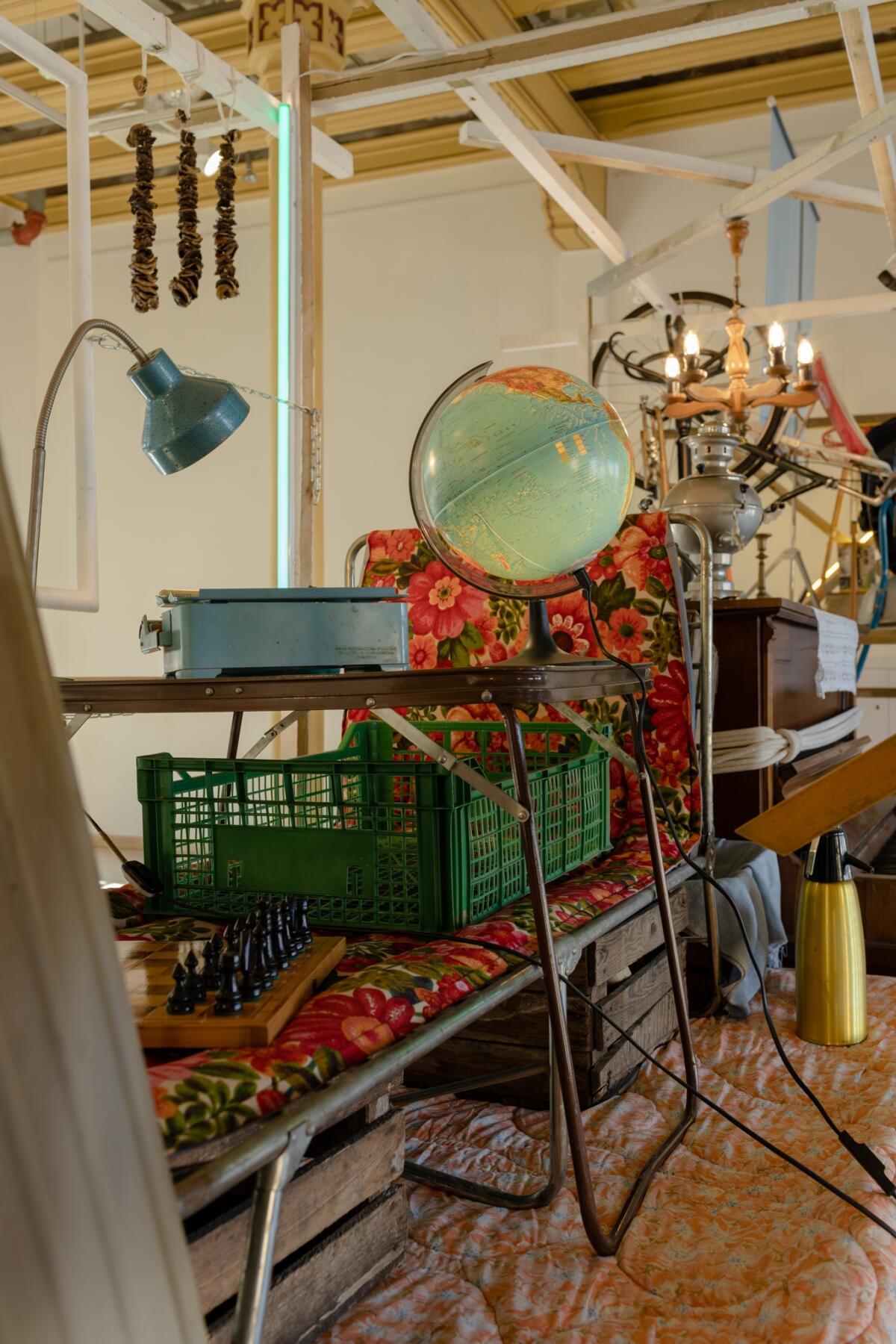
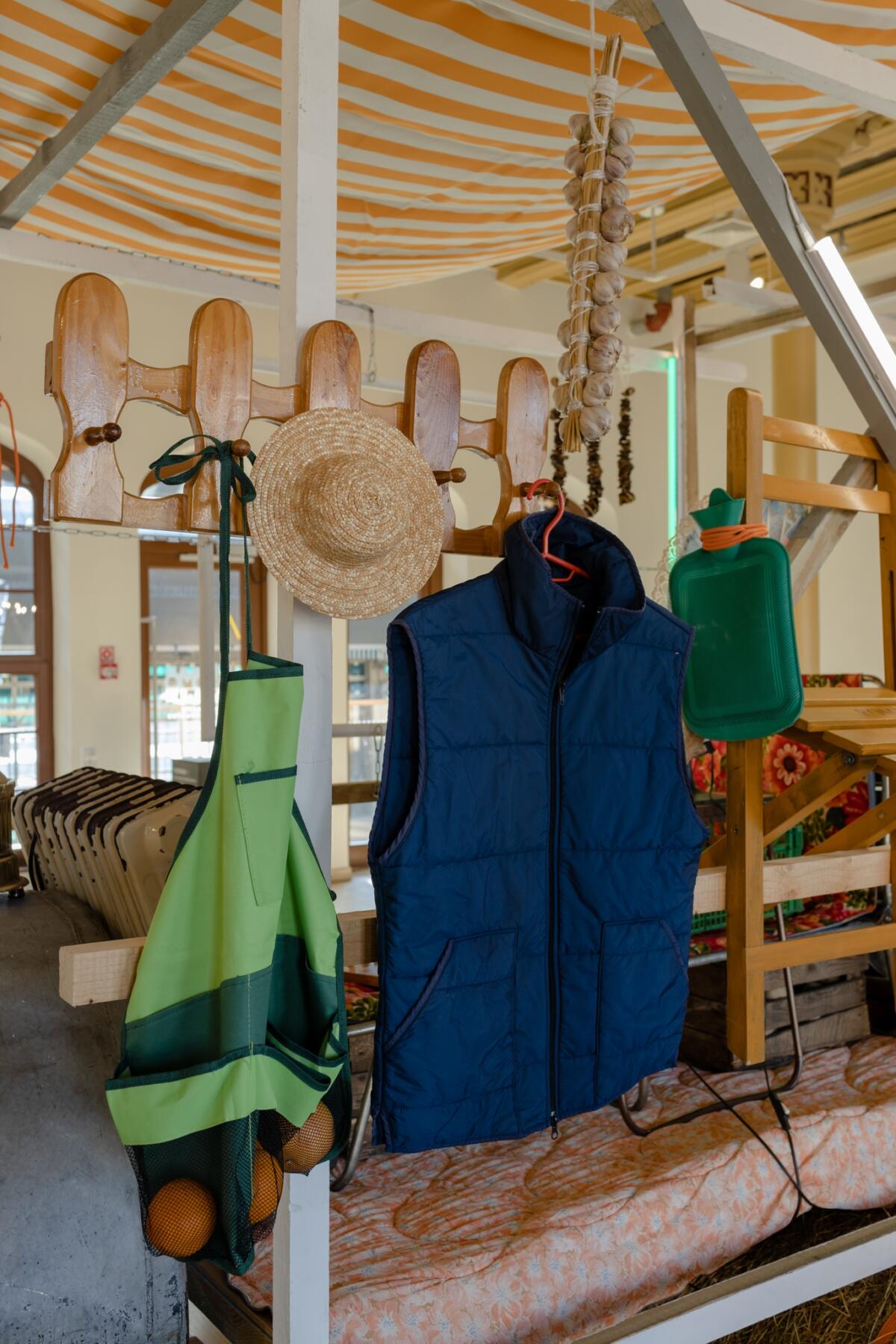
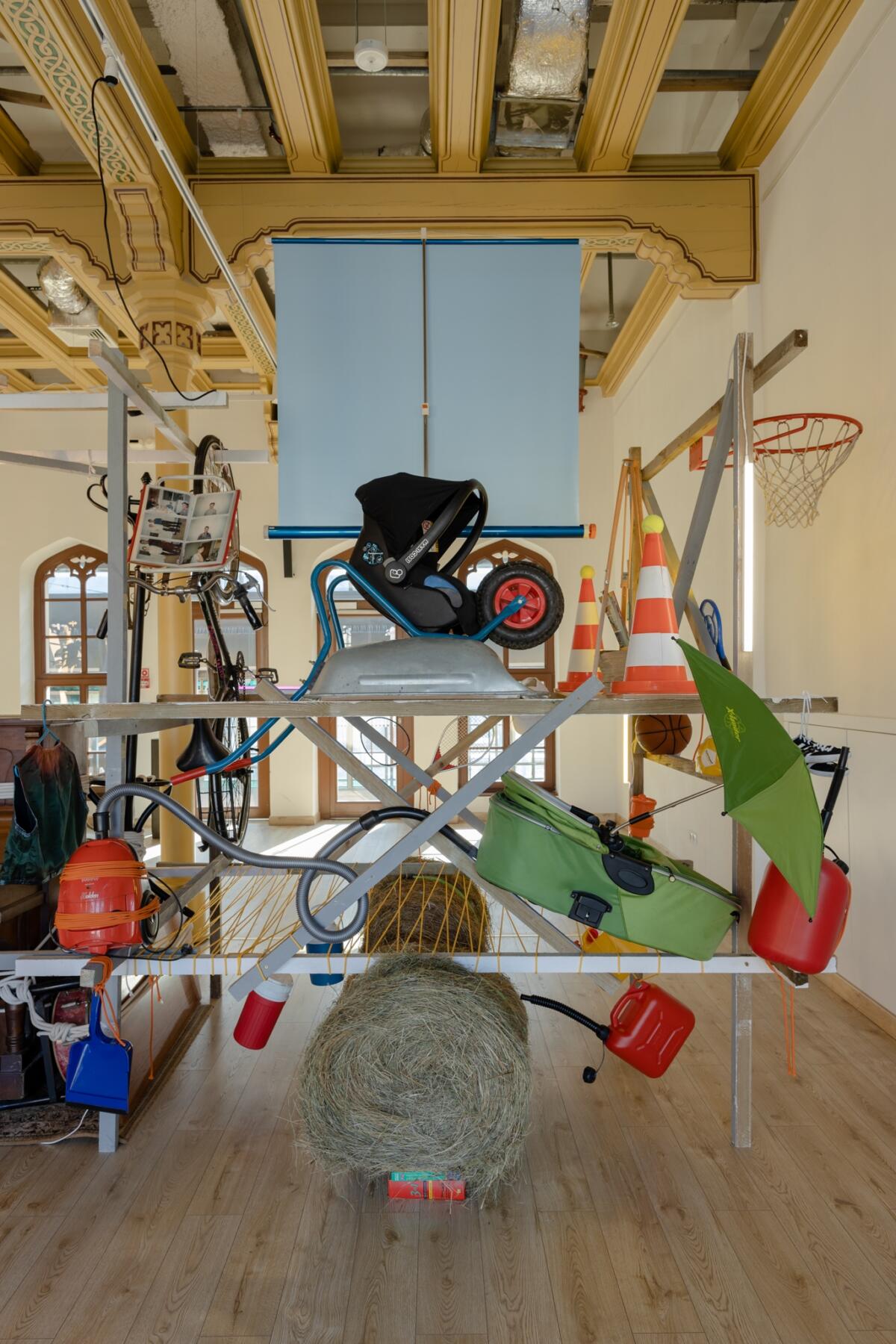
Yael Vishnizki-Levi (b. 1988 New York, NY) is a visual artist and researcher. She holds a BFA (cum laude) from Bezalel Academy in Jerusalem and is currently completing her MA at Artes Liberales, the University of Warsaw, Poland. Yael has exhibited her work internationally including at the Wrocław Contemporary Museum, BWA Wrocław Główny, Poland and Arad Contemporary Art Center, Israel. She is the recipient of numerous scholarships and research grants, among them the Asylum for the Arts Exhibition grant, the Pilecki Institute research grant and the University of Warsaw Rector’s Scholarship. Yael has participated in residency programs including at the POLIN Museum, Poland, the Nida Art Colony, Lithuania, and the Styrian A-i-R in Graz, Austria. In her work, Yael deals with ideas of representation and the recreation of historical issues. She is interested in concepts of migration throughout the 20th century and in social and artistic movements from Central-Eastern Europe.
Imprint
| Artist | Yael Vishnizki-Levi |
| Exhibition | Locomotive |
| Place / venue | BWA Wrocław Główny |
| Dates | 18 February - 27 March 2022 |
| Curated by | Anna Mituś |
| Exhibition design | Bartosz Kowal |
| Photos | Alicja Kielan |
| Website | bwa.wroc.pl/en |
| Index | BWA Wrocław Vera Zalutskaya Yael Vishnizki-Levi |

